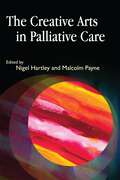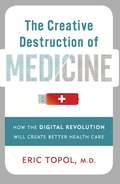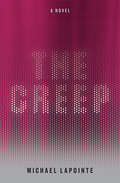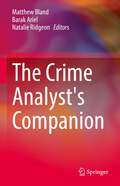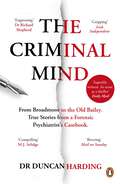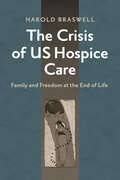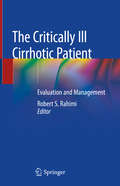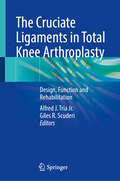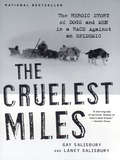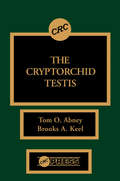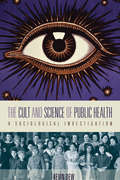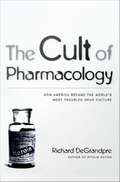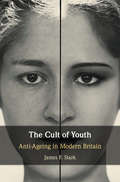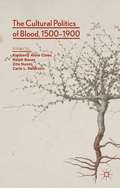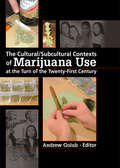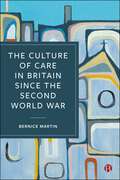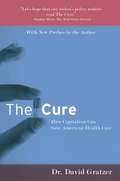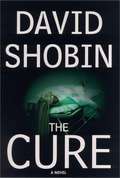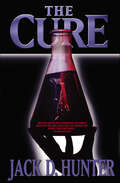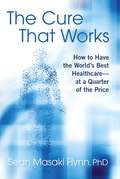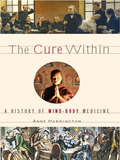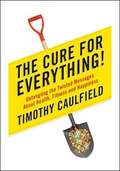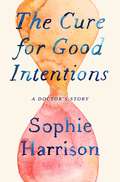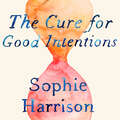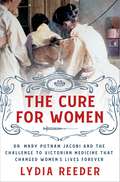- Table View
- List View
The Creative Arts in Palliative Care
by Nigel Hartley Sam Dobbs Adrian Butchers Malcolm Payne Abi GillUse of the arts in palliative care settings is a powerful and effective way of addressing the practical, psychological, social and spiritual issues faced by service users in end-of-life care. The Creative Arts in Palliative Care uncovers the possibilities for using the creative arts and provides guidance on how to implement arts projects successfully. Part 1 focuses on designing objectives for the creative arts in palliative care - such as self-fulfilment, social participation, diversion from pain and other common symptoms - and managing creative arts services. Part 2 demonstrates the theory and principles in practice, with detailed case studies: each chapter draws on a real-life project, the approaches it employed and the outcomes achieved. This book will be essential reading for healthcare professionals, arts practitioners and all those involved in providing palliative care services.
The Creative Destruction of Medicine: How the Digital Revolution Will Create Better Health Care
by Eric TopolWhat if your cell phone could detect cancer cells circulating in your blood or warn you of an imminent heart attack? Mobile wireless digital devices, including smartphones and tablets with seemingly limitless functionality, have brought about radical changes in our lives, providing hyper-connectivity to social networks and cloud computing. But the digital world has hardly pierced the medical cocoon. Until now. Beyond reading email and surfing the Web, we will soon be checking our vital signs on our phone. We can already continuously monitor our heart rhythm, blood glucose levels, and brain waves while we sleep. Miniature ultrasound imaging devices are replacing the icon of medicine--the stethoscope. DNA sequencing, Facebook, and the Watson supercomputer have already saved lives. For the first time we can capture all the relevant data from each individual to enable precision therapy, prevent major side effects of medications, and ultimately to prevent many diseases from ever occurring. And yet many of these digital medical innovations lie unused because of the medical community's profound resistance to change. In The Creative Destruction of Medicine, Eric Topol--one of the nation's top physicians and a leading voice on the digital revolution in medicine--argues that radical innovation and a true democratization of medical care are within reach, but only if we consumers demand it. We can force medicine to undergo its biggest shakeup in history. This book shows us the stakes--and how to win them.
The Creep
by Michael LaPointe"A deep, weird and uncanny tale" —Sheila Heti"A book to devour"—Iain Reid"Sinister good fun" —Lee Henderson"Gripping and unassumingly smart" —Lauren Oyler A journalist with a history of bending the facts uncovers a story about a medical breakthrough so astonishing it needs no embellishment--but behind the game-changing science lies a gruesome secret.A respected byline in the culture pages of the venerable New York magazine The Bystander, journalist Whitney Chase grapples with a mysterious compulsion to enhance her coverage with intriguing untruths and undetectable white lies. She calls it "the creep"--an overpowering need to improve the story in the telling. And she has a particular genius for getting away with it.In the immediate aftermath of 9/11, Whitney yearns to transition from profiling rock stars and novelists to covering the stories that "really matter." When a chance encounter brings her face-to-face with a potentially massive story about a game-changing medical discovery, Whitney believes she's finally found a story that doesn't need any enhancement. The brilliant and charismatic doctor behind the breakthrough claims she's found "the Holy Grail of medical science": a synthetic blood substitute that, if viable, promises to save millions of lives, and make her corporate backers rich beyond measure. But when Whitney's investigation of this apparent medical miracle puts her on the trail of a string of grisly fatalities across the country, she becomes inexorably tied to a much darker and more nefarious story than even she could imagine. Set against the ramp-up to the US invasion of Iraq and the decline of print journalism, Michael LaPointe's panoramic, ingeniously plotted debut paints an affecting portrait of an increasingly unequal twenty-first century, exploring how deceitfulness, self-enhancement, and confidently delivered lies can be transfused into fact and constitute a broader violence against the social fabric and public trust.
The Crime Analyst's Companion
by Barak Ariel Matthew Bland Natalie RidgeonThis volume presents a collection of essays from experienced crime analysts from around the world. It explores themes relevant to anyone embarking on, or already into a career in crime analysis. Divided into two sections, this book addresses technical issues central to the profession, from collection of data to presenting findings to reluctant audiences. It incorporates a collection of methodological case studies, demonstrating the ways analysis has made a meaningful difference to policing and security. This volume is intended for scholars who study and work with crime analysts, the global community of undergraduate and graduate students who may take one of these roles in the future, and law enforcement.
The Criminal Mind: Gripping encounters with serial killers and true crime from Britain's leading forensic psychiatrist
by Dr Duncan HardingWHAT MAKES A MURDERER? Unraveling the Dark Psychology Behind Britain’s Most Notorious Killers From Forensic Psychiatrist, Dr Duncan HardingSHORTLISTED FOR THE CWA ALCS GOLD DAGGER FOR NON-FICTION 2025'Grips you from the start like a bestselling novel then takes you on an extraordinary journey … Riveting’ JOHN HUMPHRYS'Incisive, informative and occasionally shocking, The Criminal Mind is an engrossing book’ DR RICHARD SHEPHERD, bestselling author of Unnatural Causes'A penetrating insight into the darkest corners of the human mind. The most moving, surprising and compelling book you’ll read this year’ M.J. ARLIDGE, bestselling author of Eeny Meeny–A young girl burns down the family homeA man doesn’t remember killing his wifeA teenager’s visions and voices lead to murderOne question binds these and many others from the casebook of Britain’s leading forensic psychiatrist: Why? What drives a person to commit seemingly inexplicable crimes?Dr Duncan Harding is the person the police and the courts turn to for answers – to establish a defendant’s mental state and motivation: their fitness to stand trial.It is a career that has brought him face to face with psychopaths, taken him to the limits of human compassion and to the darkest corners of his own troubled past.This then is a journey deep into the criminal mind . . .–PRAISE FOR THE CRIMINAL MIND'Not just another forensic psychiatrist’s casebook. . . . a moving account of how Harding became a child and adolescent forensic psychiatrist, caring for mentally disordered child and adolescent offenders' KEITH RIX professor of medical jurisprudence and forensic psychiatrist‘Superbly written, as tense as a thriller, this is a book that will make you miss the bus so gripping are these cases’ Daily Mail‘Harding’s riveting memoir is often very moving … it left me with a powerful respect for all the people in the health and justice systems who put their lives on the line to keep us safe’ MAIL ON SUNDAY‘A combination of medical coming-of-age tale and true crime that is particularly gripping … Harding writes with empathy and insight … each patient a mystery to unpick’ IRISH INDEPENDENT‘A fantastic read … a very accessible window into the darker recesses of human behaviour … hard to put down’ JUDGE DAVID WILLIAMS‘Not just another forensic psychiatrist’s casebook, but a moving account of how Duncan Harding became forensic psychiatrist’ KEITH RIX, PROFESSOR IN FORENSIC PSYCHIATRY
The Crisis of US Hospice Care: Family and Freedom at the End of Life
by Harold BraswellExploring the failure of hospice in America to care for patients and families at the end of life.Hospice is the dominant form of end-of-life care in the United States. But while the US hospice system provides many forms of treatment that are beneficial to dying people and their families, it does not encompass what is commonly referred to as long-term care, which includes help with the activities of daily living: feeding, bathing, general safety, and routine hygienic maintenance. Frequently, such care is carried out by an informal network of unpaid caregivers, such as the person's family or loved ones, who are often ill-prepared to offer this type of support. In The Crisis of US Hospice Care, Harold Braswell argues that the stress of providing long-term care typically overwhelms family members and that overdependence on familial caregiving constitutes a crisis of US hospice care that limits the freedom of dying people. Arguing for the need to focus on the time just before death, Braswell examines how the relationship of hospice to familial caregiving evolved. He traces the history of hospice over the past fifty years and describes the choice that people dying with inadequate familial support face between a neglectful home environment and an impersonal nursing home.A nuanced look at the personal and political dimensions that shape long-term, end-of-life care, this historical and ethnographic study demonstrates that the crisis in US hospice care can be alleviated only by establishing the centrality of hospice to American freedom. Providing a model for the transformative work that is required going forward, The Crisis of US Hospice Care illustrates the potential of hospice for facilitating a new way of living our last days and for having the best death possible.
The Critically Ill Cirrhotic Patient: Evaluation and Management
by Robert S. RahimiThis text provides a comprehensive, state-of-the-art overview of the diagnosis and management of the critically ill cirrhotic patient. The book reviews recent data about risk factors for acute on chronic liver failure (including infection, renal dysfunction and acute alcoholic hepatitis), profiles the latest treatment strategies for the management of variceal bleeding, ascites, hepatocellular carcinoma and presents current and novel therapies for acute hepatic encephalopathy, and anticoagulation in liver disease. The volume also focuses on the changing etiology of liver disease, with an emphasis on obesity and frailty/sarcopenia, and advances in surgical techniques, including living donor liver transplants and gender disparities in liver transplantation. Palliative care for the critically ill liver patient is also discussed in the book.Written by experts in the field, The Critically Ill Cirrhotic Patient: Evaluation and Management is a valuable resource for clinicians, practitioners, health care providers, and researchers who encounter patients with chronic liver disease, including end-stage liver cirrhosis.
The Cruciate Ligaments in Total Knee Arthroplasty: Design, Function and Rehabilitation
by Giles R. Scuderi Alfred J. Tria Jr.This book discusses total knee arthroplasty (TKA) with respect to the status of the cruciate ligaments in the replacement. The evolution of knee replacements, along with basic anatomy and kinematics of the knee, open up the presentation, with subsequent chapters on the present state of the art for each design with respect to the cruciate ligaments. The next chapters describe current and developing surgical techniques and technologies for various partial and total knee arthroplasty, including robotic and artificial intelligence techniques. Concluding chapters cover physical therapy following TKA, comparative kinematic analysis of modern designs, and future considerations for management. With authors from a variety of backgrounds - biomechanics experts, arthroplasty surgeons, rehabilitation physicians and physical therapists - this book will appeal to a broad audience including surgeons in practice, residents in training, surgeons involved in new knee designs, biomechanical engineers, and the physical therapists.
The Cruelest Miles: The Heroic Story of Dogs and Men in a Race Against an Epidemic
by Laney Salisbury Gay Salisbury"A stirring tale of survival, thanks to man's best friend . . . reflects a transcendent understanding and impeccable research."--Seattle Times When a deadly diphtheria epidemic swept through Nome, Alaska, in 1925, the local doctor knew that without a fresh batch of antitoxin, his patients would die. The lifesaving serum was a thousand miles away, the port was icebound, and planes couldn't fly in blizzard conditions--only the dogs could make it. The heroic dash of dog teams across the Alaskan wilderness to Nome inspired the annual Iditarod Trail Sled Dog Race and immortalized Balto, the lead dog of the last team whose bronze statue still stands in New York City's Central Park. This is the greatest dog story, never fully told until now.
The Cryptorchid Testis
by Brooks A. Keel Thomas O. AbneyCurrent knowledge concerning both morphological and functional cryptorchid-related alterations in the various testicular compartments is summarized in this valuable new publication. Damage to the germinal epithelium and resulting infertility in both humans and experimental animals as well as the degree of damage to the different stages of germ cell development is discussed. In addition, information concerning hormonal therapy and orchidopexy to reverse cryptorchid-related damage is provided. Morphological alterations in Sertoli and Leydig cells is discussed in terms of cellular hypertrophy and hyperplasia, alterations in organelle number and characteristics as well as changes in cell-cell junctional complexes. Changes in Sertoli cell and Leydig cell function, including gonadotropin binding, steroidogenesis and other metabolic alterations is also outlined,as well as the influence of altered testicular function on subsequent hypothalamic-pituitary changes. Vascular disruption, the potential role of paracrine substances and direct thermal damage, all of which may be responsible for the resulting detrimental changes in one or more testicular compartments, are considered.
The Cult And Science Of Public Health
by Kevin DewIn contemporary manifestations of public health rituals and events, people are being increasingly united around what they hold in common--their material being and humanity. As a cult of humanity, public health provides a moral force in society that replaces 'traditional' religions in times of great diversity or heterogeneity of peoples, activities and desires. This is in contrast to public health's foundation in science, particularly the science of epidemiology. The rigid rules of 'scientific evidence' used to determine the cause of illness and disease can work against the most vulnerable in society by putting sectors of the population, such as underrepresented workers, at a disadvantage. This study focuses on this tension between traditional science and the changing vision articulated within public health (and across many disciplines) that calls for a collective response to uncontrolled capitalism and unremitting globalization, and to the way in which health inequalities and their association with social inequalities provides a political rhetoric that calls for a new redistributive social programme. Drawing on decades of research, the author argues that public health is both a cult and a science of contemporary society.
The Cult of Pharmacology: How America Became the World's Most Troubled Drug Culture
by Richard DegrandpreAmerica had a radically different relationship with drugs a century ago. Drug prohibitions were few, and while alcohol was considered a menace, the public regularly consumed substances that are widely demonized today. Heroin was marketed by Bayer Pharmaceuticals, and marijuana was available as a tincture of cannabis sold by Parke Davis and Company. Exploring how this rather benign relationship with psychoactive drugs was transformed into one of confusion and chaos, The Cult of Pharmacology tells the dramatic story of how, as one legal drug after another fell from grace, new pharmaceutical substances took their place. Whether Valium or OxyContin at the pharmacy, cocaine or meth purchased on the street, or alcohol and tobacco from the corner store, drugs and drug use proliferated in twentieth-century America despite an escalating war on "drugs. " Richard DeGrandpre, a past fellow of the National Institute on Drug Abuse and author of the best-selling book Ritalin Nation, delivers a remarkably original interpretation of drugs by examining the seductive but ill-fated belief that they are chemically predestined to be either good or evil. He argues that the determination to treat the medically sanctioned use of drugs such as Miltown or Seconal separately from the illicit use of substances like heroin or ecstasy has blinded America to how drugs are transformed by the manner in which a culture deals with them. Bringing forth a wealth of scientific research showing the powerful influence of social and psychological factors on how the brain is affected by drugs, DeGrandpre demonstrates that psychoactive substances are not angels or demons irrespective of why, how, or by whom they are used. The Cult of Pharmacology is a bold and necessary new account of America's complex relationship with drugs.
The Cult of Youth: Anti-Ageing in Modern Britain
by James F. StarkIn this major new study, James F. Stark provides the first historical account of the most dominant ideas, practices, and material cultures associated with anti-ageing and rejuvenation in modern Britain. With a focus on the interwar period, his study uncovers the role of the commercial world in influencing attitudes towards ageing and youth. Stark argues that the technologies of anti-ageing, their commercialisation and their consumption made rejuvenation a possible and desirable aim in a period of socio-political instability, mechanised conflict and extending lifespans. Ultimately, Stark offers an innovative historical account, which draws together bodies, gender, science, medicine, advertising, and ageing, and shows how the quest for youth was transformed by social anxieties about an ageing population and economic crisis.
The Cultural Politics of Blood, 1500–1900
by Kimberly Anne ColesThe essays of this collection explore how ideas about 'blood' in science and literature have supported, at various points in history and in various places in the circum-Atlantic world, fantasies of human embodiment and human difference that serve to naturalize existing hierarchies.
The Cultural/Subcultural Contexts of Marijuana Use at the Turn of the Twenty-First Century
by Andrew GolubLearn why marijuana use has increased in the new millenniumAccording to the Substance Abuse and Mental Health Services Administration, marijuana is the most commonly used illicit drug. The Cultural/Subcultural Contexts of Marijuana Use at the Turn of the Twenty-First Century takes a close look at present cannabis use trends in the new millennium by providing the latest research findings and most current case studies. Age and ethnographic data are presented in detail always with a constant focus on the unique subcultural contexts in today&’s society. This examination explores the most pressing issues in marijuana use, including the increased popularity of blunt smoking, the social ramifications of marijuana use in gangs and Southeast Asian youth, and alternative delivery systems for medical marijuana.The Cultural/Subcultural Contexts of Marijuana Use at the Turn of the Twenty-First Century discusses various aspects of marijuana being the drug of choice in today&’s culture, including the different subgroups of age, economic status, and ethnic background. The book provides a comprehensive view of the people, reasons for use, varied ways of ingesting the drug, and marijuana use "rituals." Extensive references, charts, tables, and figures are included to enhance clarification of research findings.The Cultural/Subcultural Contexts of Marijuana Use at the Turn of the Twenty-First Century discusses the latest research findings on: the growth of marijuana use in different social groups during the 1990s medical marijuana blunt smoking and marijuana use rituals as settings for informal social controls marijuana use among minorities marijuana use in youths and young adults marijuana use among gang members adult use production, distribution, and administration of non-smokable marijuanaThe Cultural/Subcultural Contexts of Marijuana Use at the Turn of the Twenty-First Century is insightful, valuable, and is certain to become a reference source for researchers, educators, students, and policy advocates.
The Culture of Care in Britain since the Second World War
by Bernice MartinThis book examines the evolving value of caregiving in Britain, from the welfare state's inception to the present day. It explores the shifts in discourse surrounding care, charting key social, demographic, economic, political and cultural changes which have led to the current 'care crisis'. The author examines five key themes: the tension within institutional Christianity between caring for the marginalized versus maintaining 'respectability'; the secularization of the value of care and its interaction with emerging social divisions; the persistent expectation that women bear the caregiving burden; the economic and social undervaluation of emotional and practical care work; and the challenges facing the care and health sectors. The author suggests that recalibrating the tax system to shift the burden from incomes to profits may be necessary for the survival of welfare systems under these new conditions.
The Cure
by David GratzerWe are surrounded by medical miracles: polio has been eradicated; childhood leukemia is now treatable; death by cardiovascular disease has declined by two-thirds in the last fifty years. Yet while American medicine has never been better, angst over American health care has never been greater. Why is American health care such a mess? In this path-breaking book--Nobel laureate Milton Friedman calls it "fascinating and thorough"--Dr. David Gratzer goes to the heart of the problem, showing that the crisis in American health care stems largely from its addiction to outmoded and discredited economic ideas. What needs to be done? Dr. Gratzer mounts a bold and provocative argument, rejecting the conventional wisdom that socialized health care is compassionate and that top-down government agencies like the FDA actually save lives. Instead, he prescribes a strong dose of capitalism. The Cure offers a detailed overview of American health care, from economics and politics to medical science. Weighing in on the most controversial topics in health care, Dr. Gratzer makes the case that it's possible to reduce health expenses, insure millions more, and improve quality of care while not growing government or raising taxes. An award-winning author and essayist, he is a master storyteller, enlivening his book with anecdotes, interviews, and stories drawn from his own extensive clinical experience. He details the cardiac woes of Robert E. Lee and Dick Cheney, describes a chat over coffee with Canada's foremost private medical entrepreneur (an acquaintance of Fidel Castro, as it happens), and explains the evolution of his own thinking, from advocating HillaryCare as a medical student to promoting individual choice and competition today. The patient is in critical condition; Dr. Gratzer diagnoses the disease and prescribes the cure.
The Cure
by David ShobinAs the reluctant chief spokesperson for the pioneering Ecolabs, charismatic Dr. Steve McLaren has praised the company's latest herbal drug to a nationwide television audience. As a caring physician, he has unwittingly prescribed it to countless women.<P> Touted as the "female Viagra", Restore-Tabs are the miraculous answer to the prayers of anyone desperate to enhance her appearance and her sex drive. McLaren suspects that the supposedly harmless little pill is too good to be true--yet even he doesn't grasp the chilling truth until it's too late.<P> One by one, McLaren's patients are developing alarming side effects. With growing dead, the good doctor realizes that the nutritional supplement is responsible for the extreme symptoms--and that somebody at Ecolabs will stop at nothing to keep him from investigating...
The Cure
by Jack D. HunterSuppose a cure for cancer was finally discovered, a cure that could save the lives of millions—and render much of today's medical and pharmaceutical industry obsolete? How far would the world's movers and shakers go to control this miraculous panacea—or destroy it?Controversial oncologist Dr. Anson Lunt dies in a suspicious plane crash, just as one of his researchers develops what appears to be a "magic bullet" against all forms of cancer. Before his mangled body is even cold, powerful forces are conspiring to seize control of the top-secret cure, either to reap the potential riches at stake—or else to suppress the discovery entirely. Industrial espionage, blackmail, and murder are only a few of the ruthless strategies employed in the no-holds-barred battle for the Cure.A gripping tale of cutting-edge medicine and international intrigue, The Cure exposes the dark underside of the modern medical establishment.At the Publisher's request, this title is being sold without Digital Rights Management Software (DRM) applied.
The Cure That Works: How to Have the World's Best Health Care -- at a Quarter of the Price
by Sean M. FlynnWhat’s the Most Important Fact About the Heathcare Crisis? That We Already Know the Cure! Whole Foods Markets, the State of Indiana, and innovators around the world have used forgotten American ideas to slash healthcare costs by 75 percent while simultaneously delivering true universal access, coverage for preexisting conditions, and an ironclad safety net. Economics for Dummies author Sean Flynn explains that simple things—like price tags, competition, and plentiful health savings contributions—crush costs while granting everyone equal access to the world’s best healthcare services.
The Cure Within: A History of Mind-Body Medicine
by Anne Harrington"A splendid history of mind-body medicine...a book that desperately needed to be written."--Jerome Groopman, New York Times Is stress a deadly disease on the rise in modern society? Can mind-body practices from the East help us become well? When it comes to healing, we believe we must look beyond doctors and drugs; we must look within ourselves. Faith, relationships, and attitude matter. But why do we believe such things? From psychoanalysis to the placebo effect to meditation, this vibrant cultural history describes mind-body healing as rooted in a patchwork of stories, allowing us to make new sense of our suffering and to rationalize new treatments and lifestyles.
The Cure for Everything
by Timothy CaulfieldThe surprising truth about what it takes to be healthy In The Cure for Everything! health-law expert Timothy Caulfield exposes the special interests that twist good science about health and fitness in order to sell us services and products that mostly don't work. Want great abs? You won't get them by using the latest Ab-Flex-Spinner-Thingy. Are you trying to lose ten pounds? Diet books are a waste of trees. Do you rely on health-care practitioners-either mainstream or alternative-to provide the cure for what ails you? Then beware! Both Big Pharma and naturopathy are powerful forces that have products and services to sell. Caulfield doesn't just talk the talk. He signs up for circuit training with a Hollywood trainer who cultivates the abs of the stars. With his own Food Advisory Team (FAT) made up of specialists in nutrition and diet, Caulfield makes a lifestyle change that really works. (Mainly it involves eating less than he is used to. Much less. ) And when he embarks on a holiday cruise, dreading motion sickness, he takes along both a homeopathic and pharmaceutical remedy-with surprising results. This is a lighthearted book with a serious theme. Caulfield demonstrates that the truth about being healthy is easy to find-but often hard to do.
The Cure for Good Intentions: A Doctor's Story
by Sophie Harrison'When I was twenty-eight I trained as a doctor. Initially everyone was interested. Amazing! people said, when I told them. What made you do that? I couldn't find a short answer. Sometimes I said, "I had a revelation on a beach." It was partly true'The Cure for Good Intentions is about a life-changing decision. Sophie gave up her job as an editor at a prestigious literary magazine and put herself through medical school and hospital training before eventually becoming a GP. From peaceful office days spent writing tactful comments on manuscripts she entered a world that spoke an entirely different language. She was now inside scenes familiar from television and books - long corridors, busy wards, stern consultants, anxious patients - but what was her part in it all? Back in the community as a brand-new GP, the same question grew ever more pressing.This is a book about how a doctor is made: it asks what a doctor does, and what a doctor is. What signifies a doctor: a caring-yet-brisk bedside manner? A mode of dress? A stethoscope? A firm way with a prescription pad? What is empathy, and what does it achieve? How do we deal with pain, our own and other people's? The Cure is an outsider's look at the inside of a profession that has never been so scrutinised, or so misunderstood.
The Cure for Good Intentions: A Doctor's Story
by Sophie Harrison'When I was twenty-eight I trained as a doctor. Initially everyone was interested. Amazing! people said, when I told them. What made you do that? I couldn't find a short answer. Sometimes I said, "I had a revelation on a beach." It was partly true'The Cure for Good Intentions is about a life-changing decision. Sophie gave up her job as an editor at a prestigious literary magazine and put herself through medical school and hospital training before eventually becoming a GP. From peaceful office days spent writing tactful comments on manuscripts she entered a world that spoke an entirely different language. She was now inside scenes familiar from television and books - long corridors, busy wards, stern consultants, anxious patients - but what was her part in it all? Back in the community as a brand-new GP, the same question grew ever more pressing.This is a book about how a doctor is made: it asks what a doctor does, and what a doctor is. What signifies a doctor: a caring-yet-brisk bedside manner? A mode of dress? A stethoscope? A firm way with a prescription pad? What is empathy, and what does it achieve? How do we deal with pain, our own and other people's? The Cure is an outsider's look at the inside of a profession that has never been so scrutinised, or so misunderstood.
The Cure for Women: Dr. Mary Putnam Jacobi and the Challenge to Victorian Medicine That Changed Women's Lives Forever
by Lydia Reeder“Valiant and timely ... ‘The Cure for Women’ reintroduces its subject as a hero for this moment.” —The New York TimesHow Victorian male doctors used false science to argue that women were unfit for anything but motherhood—and the brilliant doctor who defied themAfter Elizabeth Blackwell became the first woman to graduate from medical school, more women demanded a chance to study medicine. Barred entrance to universities like Harvard, women built their own first-rate medical schools and hospitals. Their success spurred a chilling backlash from elite, white male physicians who were obsessed with eugenics and the propagation of the white race. Distorting Darwin’s evolution theory, these haughty physicians proclaimed in bestselling books that women should never be allowed to attend college or enter a profession because their menstrual cycles made them perpetually sick. Motherhood was their constitution and duty.Into the midst of this turmoil marched tiny, dynamic Mary Putnam Jacobi, daughter of New York publisher George Palmer Putnam and the first woman to be accepted into the world-renowned Sorbonne medical school in Paris. As one of the best-educated doctors in the world, she returned to New York for the fight of her life. Aided by other prominent women physicians and suffragists, Jacobi conducted the first-ever data-backed, scientific research on women's reproductive biology. The results of her studies shook the foundations of medical science and higher education. Full of larger than life characters and cinematically written, The Cure for Women documents the birth of a sexist science still haunting us today as the fight for control of women’s bodies and lives continues.
